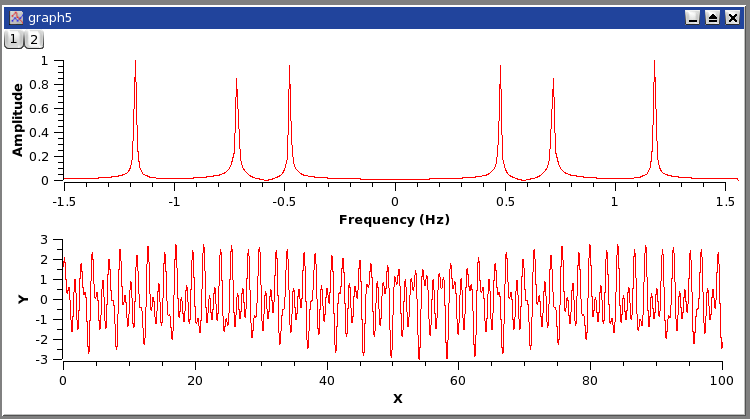Chapter 6. Analysis of data and curves
Fast Fourier Transform
This function can be accessed by the command FFT.... It can be found in the Analysis Menu when a table or a plot is selected. The Fourier transform decomposes a signal in its elementary components by assuming that the signal x(t) can be describe as a sum:
in which  are the frequencies, an are the amplitudes of each frequency and
are the frequencies, an are the amplitudes of each frequency and  are the phase corresponding frequency. SciDAVis will compute these parameters and build a new plot of the amplitude as a function of the frequency.
are the phase corresponding frequency. SciDAVis will compute these parameters and build a new plot of the amplitude as a function of the frequency.
Figure 6-1. An example of a inverse FFT.
FFT performed on a curve to extract the characteristic frequencies. The signal is on the bottom plot, while the amplitude-frequency plot is on the top layer. In this example, the amplitude curve has been normalized, and the frequencies have been shifted to obtain a centered x-scale.

Some parameters of the FFT can be modified in the FFT dialog.
